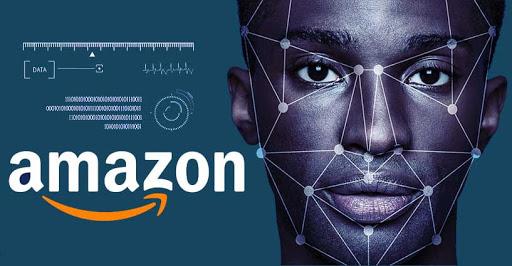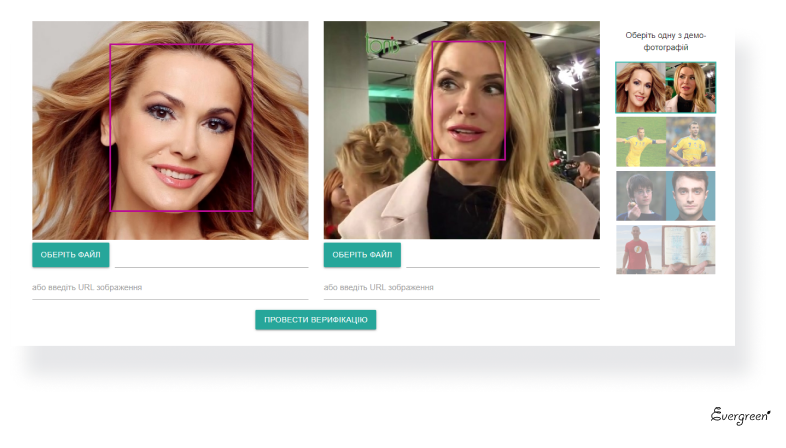The face identification technology has made its way into many areas of business and consumer sector, as we already mentioned in our previous article. Today, we would like to focus on the practical application of facial recognition in banking, retail, delivery, and logistics, border security, and other services (please, follow the links to read the sections of interest).
Part of the KYC process. Banks and financial institutions must comply with KYC regulations (=Know Your Customer) in the fight against global financial crime, money laundering, and illegal corruption schemes. KYC procedures include ID card and other document verification, face verification, and biometric verification to prove that clients are genuinely who they claim to be.
Biometric ATMs. Facial recognition can be used instead of PINs to allow cash withdrawals. During the first use of such an ATM, the user has to insert their bank card and have their face photo taken by the ATM camera. They have to confirm a password (will be sent to their mobile phone), and the image will be registered in the system to complete the verification.
Anti-fraud and risk minimization. Identify potential fraudsters and unscrupulous clients by comparing their images against different databases. Additionally, you can protect your organization from dishonest employees and their accomplices that may be involved in fraudulent activities.
Evergreen has experience in implementing Face ID technology in the financial sector. We have developed a face recognition and comparison system for CreditMarket — one of the leaders of Ukraine’s consumer loan market. This technical solution already helps our client to identify fraudsters, use less manual labor by automating document verification, and reduce the share of bad loans.

Prevent organized retail crime and violence. Facial recognition can help retailers keep their stores safer, and take a proactive approach, preventing crimes before they occur. A face recognition system helps identify known shoplifters or aggressive visitors the moment they enter the shop floor and sends alerts to employees and security.
Customer counting. Smart CCTV cameras can be linked to a face detection API to count and analyze the number of customers entering the store during the day. Gender, age, ethnicity, and other parameters can be analyzed to give the store owners a better understanding of their target audience demographics and to identify repeat customers.
Customized shopping experience. Greet your customers at the store entrance, send meaningful alerts to store employees, recognize your loyal and VIP clients, and provide better customer service. Facial recognition systems can be synchronized with other retail solutions, loyalty systems, point of sale (POS), and more.
Self-service checkout. Facial recognition helps prevent identity fraud and can be used as part of the payment verification process. Such service has been introduced in the Amazon Go stores that allow shoppers to pay for the purchase by facial recognition, so manual verification is not necessary. By the way, we wrote about the cashier-less service in one of our previous articles.

Express delivery. Face identification is already used by one of the Alibaba's delivery arms in China. The new system scans the sender's face in 1-2 seconds instead of ID verification, so mail and packages can be sent much quicker. To use this service, senders need to upload the required information in advance (addressee, mailing address) through one of Alibaba's applications.
Facial recognition of delivery drivers allows delivery providers to secure sensitive products (e.g., prescription drugs, medical devices), and make the delivery process more transparent at every stage. Also, Face ID can be used in different truck driver apps, for trucks to 'recognize' their drivers, and to enhance the drivers' safety by monitoring their alertness during the daily operations to make sure they are awake behind the wheel, etc.
Border security and customs control. Face identification systems are already used in airports: a person’s photo will be taken and compared against the one on their passport to simplify the entry and exit of international travelers. Face identification allows control officers to automate passport checks at border checkpoints, making border crossing process more quick, easy, and secure.
Employee tracking. Face ID can be used for biometric time tracking, to prevent time fraud and increase staff efficiency of your company.
Access protection. Using face identification mechanisms, your company can guarantee that only authorized employees have access to secure locations (military facilities, government buildings, R&D areas, and more).
Crowd management. Face recognition technology helps quickly and effectively verify visitors to any event (concert, game or conference, etc.) without creating unnecessary queues.
Guest authorization. By using face identification, you can allow your guests to bypass traditional check-in desks at a hotel and use a self-service kiosk instead. In fitness clubs and other facilities, face recognition can replace club cards, season tickets, etc. to make the service even more convenient and reliable.
To protect companies and services providers from identity theft and online fraud, liveness detection is needed, especially for unsupervised authentication situation.
Liveness detection is a security feature used to verify that a person in front of the camera is a real human, present there at a given moment. Liveness detection can be of several types:
We are glad to present to you Face ID — a ready-made product for face recognition and face comparison created by Evergreen. It is already used by loan institutions:
The system can recognize an individual's face on the photo or a document copy and compare the image against the one already stored in the database. When the similarity is confirmed, the loan application will be automatically transferred to the next processing stage.
Optionally, we can implement advanced recognition of age, gender, ethnicity, body structure (skeleton), and some other features depending on your business needs and project goals.

Also, our solution will be of interest to logistics companies, service-providing companies, and other businesses. We study the specific needs of each company and offer a solution that best meets your requirements.
Are you interested in learning more about our face recognition product, want to try a demo, or, perhaps, feel ready to cooperate? Please contact us — we will be glad to answer all your questions and can implement the product in your business in the shortest possible time.